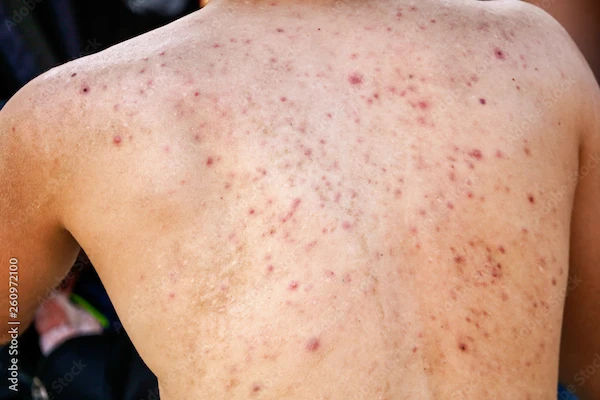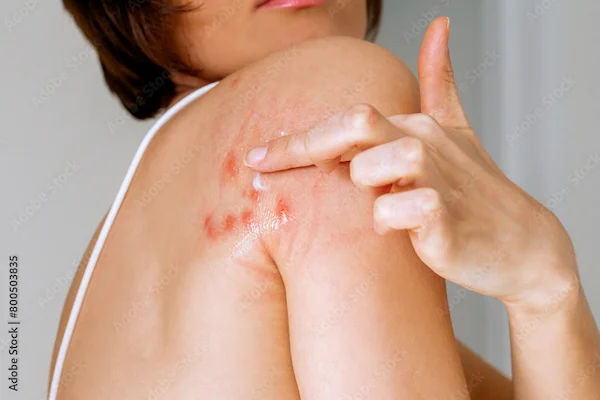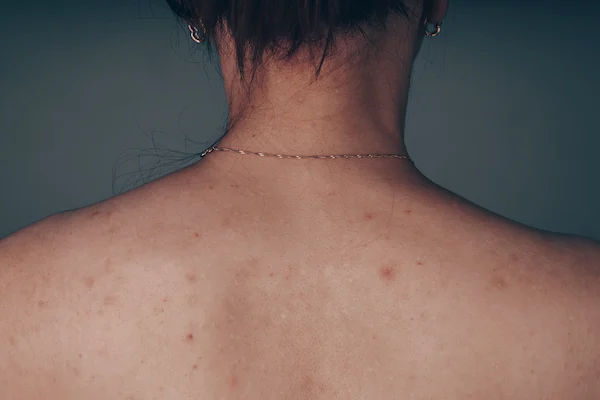Clindamycin For Acne: Effective Treatment, Usage Tips, And Alternatives
Explore how clindamycin treats acne effectively. Learn about its benefits, usage tips, and alternative treatments for clear, healthy skin.

Written by Dr Sonia Bhatt
Last updated on 3rd Jul, 2025
Acne is one of the most common skin conditions worldwide, affecting people of all ages. Whether you are struggling with occasional breakouts or dealing with more persistent acne, finding an effective treatment is key to managing the condition. One such treatment is clindamycin, a topical antibiotic that has been proven to help reduce acne symptoms and improve skin appearance. In this article, we will explore what clindamycin is, how it works to treat acne, its benefits, potential side effects, and how to use it effectively as part of your skincare routine.
What is Clindamycin?
Clindamycin is a topical antibiotic that is commonly used to treat acne vulgaris, the most common type of acne. It belongs to a class of drugs known as lincosamides and works by targeting the bacteria that contribute to acne. Clindamycin is often prescribed in gel, lotion, or cream form and is applied directly to the skin.
Clindamycin has a long history of use in treating bacterial infections, but it has become a popular treatment for acne due to its effectiveness in combating the specific bacteria that contribute to the condition. First introduced in the 1960s as an antibiotic for general bacterial infections, clindamycin quickly gained traction as a treatment for acne due to its ability to reduce inflammation and kill acne-causing bacteria, making it an essential part of many acne treatment plans.
How Does Clindamycin Work for Acne?
Clindamycin works primarily through its antibacterial and anti-inflammatory properties. It helps to reduce acne by targeting the root causes of breakouts:
Kills Acne-Causing Bacteria
Cutibacterium acnes (or Propionibacterium acnes), the bacteria responsible for acne, thrives in clogged pores where there is a buildup of excess oil and dead skin cells. Clindamycin targets these bacteria by inhibiting their ability to produce proteins necessary for their survival. This helps reduce the bacterial load in the pores, which can ultimately lead to fewer breakouts and a reduction in inflammation.
Reduces Inflammation
Acne is often accompanied by redness, swelling, and discomfort, all of which are symptoms of inflammation. Clindamycin helps calm the inflammatory response, leading to less redness and irritation around acne lesions. By reducing inflammation, clindamycin not only improves the appearance of existing breakouts but also helps prevent new ones from forming.
Prevents New Acne from Developing
By killing acne-causing bacteria and reducing inflammation, clindamycin can help prevent the formation of new pimples, whiteheads, and blackheads. This makes it particularly effective for those who experience persistent or recurrent acne.
Combination Therapy
Clindamycin is often used in combination with other acne treatments, such as benzoyl peroxide or retinoids, to enhance its effectiveness. While clindamycin works to kill bacteria and reduce inflammation, benzoyl peroxide helps to exfoliate dead skin cells and clear clogged pores, and retinoids promote skin cell turnover. This combined approach allows for a more comprehensive acne treatment, addressing multiple factors contributing to breakouts.
How to Use Clindamycin for Acne
To achieve the best results with clindamycin, it is essential to follow the proper application methods. Here is a step-by-step guide on how to use clindamycin for acne:
Cleanse Your Skin First
Before applying clindamycin, wash your face with a gentle, non-comedogenic cleanser that is suited to your skin type. Be sure to remove any makeup, dirt, or excess oils from your skin to ensure that the treatment can penetrate the pores effectively.
Apply Clindamycin to Affected Areas
Once your skin is clean and dry, apply a thin layer of clindamycin to the areas of your face or body where you have acne. Use just enough to cover the skin without over-applying the product. Avoid getting the medication in your eyes, mouth, or sensitive areas.
Use Once or Twice Daily
Depending on your dermatologist’s instructions, apply clindamycin once or twice a day. If you are using a combination product (e.g., clindamycin and benzoyl peroxide), your dermatologist may recommend using it in the morning or evening, depending on your needs.
Moisturize
Even though clindamycin is generally gentle on the skin, it is important to follow up with a non-comedogenic moisturiser to keep your skin hydrated. Acne treatments can sometimes cause dryness or irritation, so moisturising will help maintain your skin’s balance.
Use Sunscreen
Many acne treatments, including clindamycin, can increase your skin’s sensitivity to the sun. Always apply a broad-spectrum sunscreen with an SPF of at least 30 before heading outdoors to protect your skin from harmful UV rays.
Potential Side Effects of Clindamycin
Like any medication, clindamycin may cause side effects. However, most people tolerate it well when used as directed. Common side effects include:
Dryness and Irritation: Some users may experience mild dryness or irritation at the site of application. If this occurs, consider reducing the frequency of use or applying a more moisturising product.
Redness and Peeling: In rare cases, clindamycin can cause redness or peeling of the skin, especially if it is overused. These symptoms typically resolve when the treatment is reduced or stopped.
Allergic Reactions: Although uncommon, some individuals may be allergic to clindamycin, which can result in severe irritation, rash, or swelling. If you experience these symptoms, discontinue use immediately and consult your dermatologist.
If you experience significant side effects, you must contact your dermatologist for guidance on adjusting your treatment plan.
Precautions and Considerations
Before starting treatment with clindamycin, keep the following precautions in mind:
Consult a Dermatologist: It’s essential to consult a dermatologist before beginning treatment with clindamycin, especially if you have sensitive skin or a history of allergic reactions to antibiotics. A dermatologist will help you determine whether clindamycin is the right choice for your skin type and acne severity.
Avoid Overuse: Using too much clindamycin or applying it too frequently can increase the risk of side effects, including dryness, irritation, or antibiotic resistance. Always follow your dermatologist’s instructions and only apply a thin layer to the affected areas.
Pregnancy and Breastfeeding: Clindamycin is generally considered safe for use during pregnancy and breastfeeding, but it’s important to speak with your healthcare provider before using any medication during these times.
Alternatives to Clindamycin
While clindamycin is effective for many people, it’s important to consider other treatment options for acne, especially if clindamycin is not working or causes irritation.
Other Topical Antibiotics
In addition to clindamycin, there are other topical antibiotics that can be used to treat acne. These include erythromycin and tetracycline. These antibiotics work similarly by targeting the bacteria responsible for acne and reducing inflammation.
Non-antibiotic Treatments
Non-antibiotic treatments can be effective for managing acne without the use of antibiotics. These include:
Benzoyl Peroxide: Kills bacteria and removes excess oil and dead skin cells.
Salicylic Acid: Exfoliates the skin and clears clogged pores.
Topical Retinoids: Promotes cell turnover and prevents clogged pores.
Chemical Peels: Removes the top layers of skin to promote new skin growth.
Laser and Light Therapy: Uses focused light to target and destroy acne-causing bacteria.
Natural Remedies
Some people prefer to use natural remedies for acne treatment. These include:
Tea Tree Oil: Has antibacterial and anti-inflammatory properties.
Aloe Vera: Soothes the skin and reduces inflammation.
Green Tea: Contains antioxidants that can help reduce acne.
Conclusion
Clindamycin is a highly effective topical antibiotic for treating acne, targeting the bacteria responsible for acne and reducing inflammation. However, individual responses to treatment can vary, and alternatives such as other topical antibiotics, non-antibiotic treatments, natural remedies, and lifestyle changes should be considered if clindamycin isn't effective or causes irritation. Consulting with a dermatologist is crucial to determine the most suitable treatment plan tailored to your unique skin needs, ensuring the best path to clearer, healthier skin.
Consult Top Dermatologist
Consult Top Dermatologist

Dr. S Madhuri
Dermatologist
10 Years • MBBS, MD. DVL, DNB, Fellow (Dermatosurgery & Lasers)
Secunderabad
Apollo Hospitals Secunderabad, Secunderabad
(300+ Patients)

Dr. Somshukla Ray
Dermatologist
10 Years • MBBS, MD (Dermatology,Venerology & Leprosy), DNB (Dermatology,Venerology & Leprosy)
Kolkata
MCR SUPER SPECIALITY POLY CLINIC & PATHOLOGY, Kolkata
(25+ Patients)
Dr. Mayuri Jain
Dermatologist
11 Years • MBBS, MD Dermatology , Venereology & Leprosy
Delhi
Dr Mayuri Jain Clinic, Delhi

Dr. Bhavyashree U G
Dermatologist
14 Years • MBBS, MD Dermatology, Venereology & Leprosy
Bengaluru
Bhavyas skin and hair center, Bengaluru

Dr. Nirjhar Mondal
Dermatologist
7 Years • MBBS , MD (Derm & Vener , Leprosy)
Avenue
Wellness Point, Avenue



